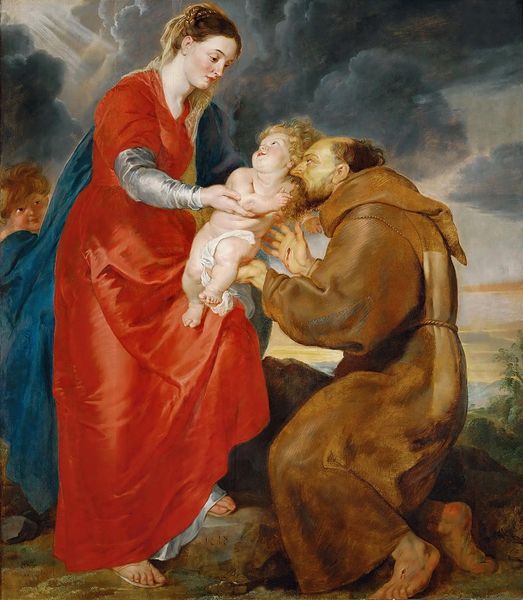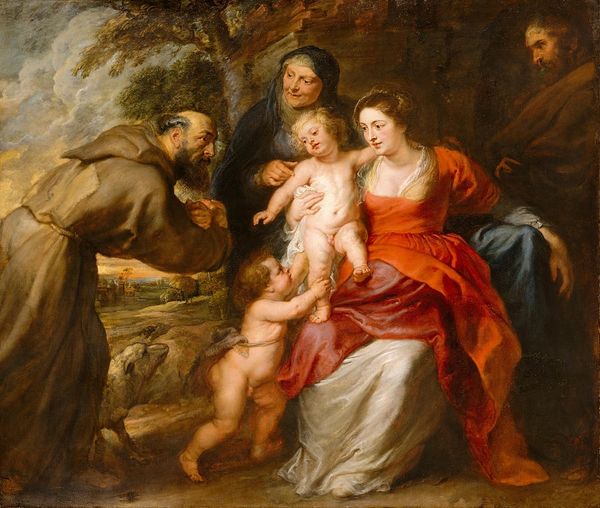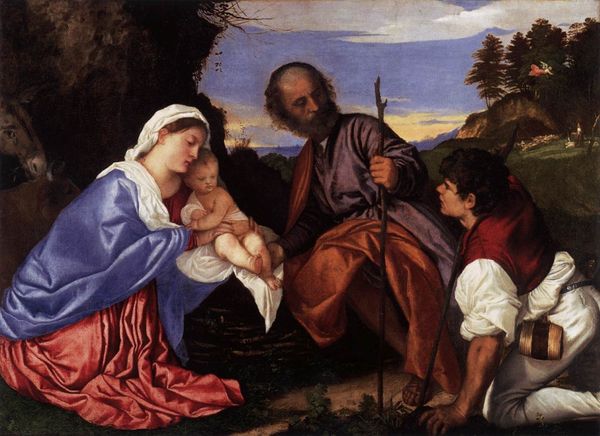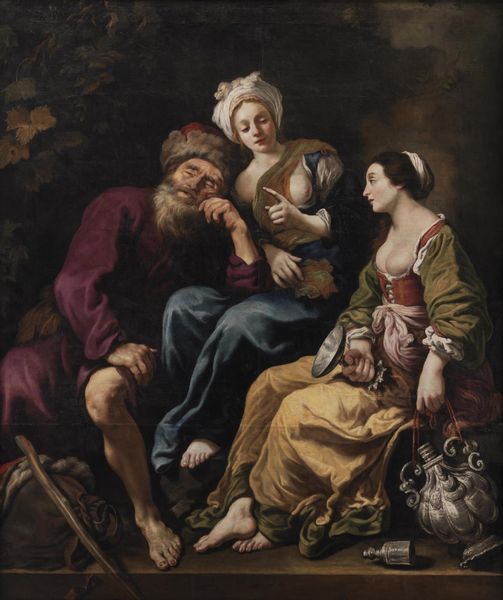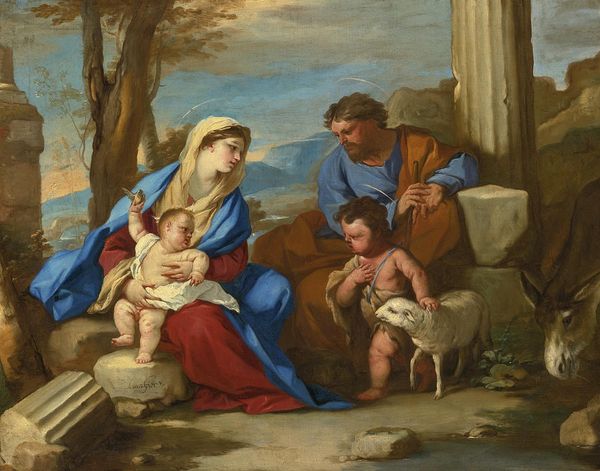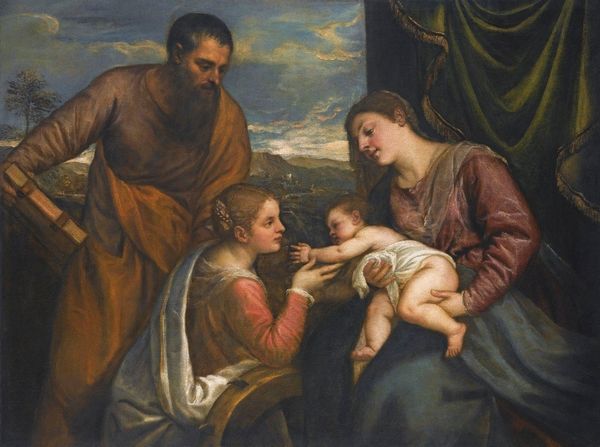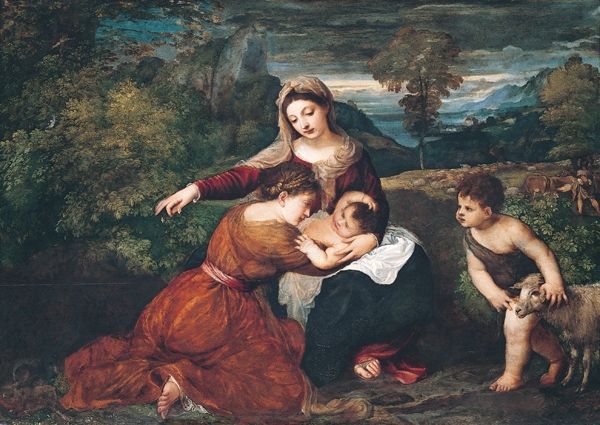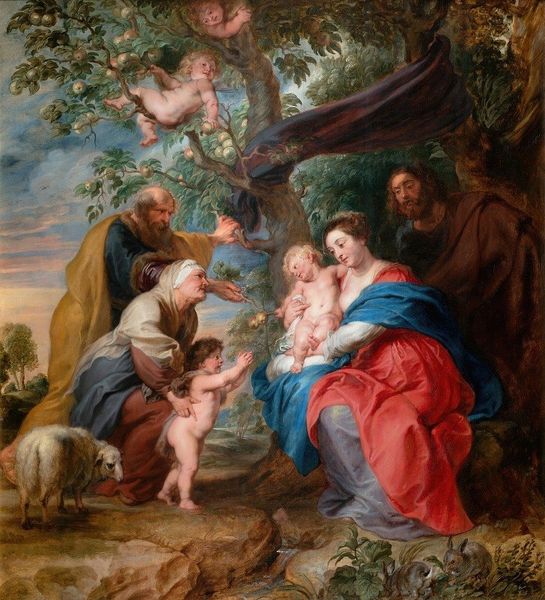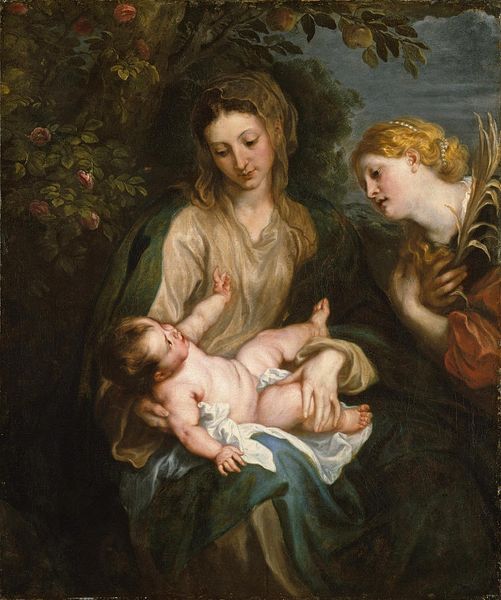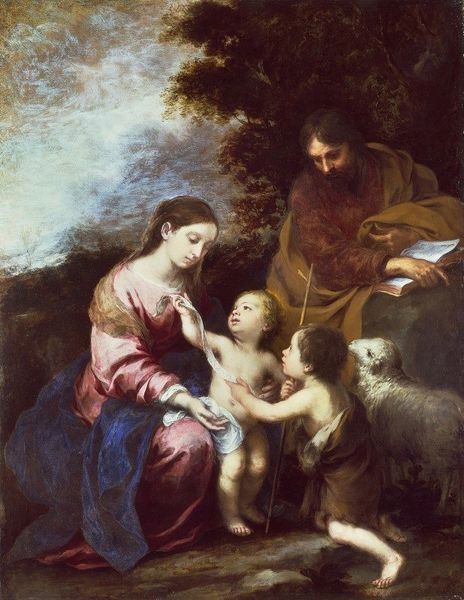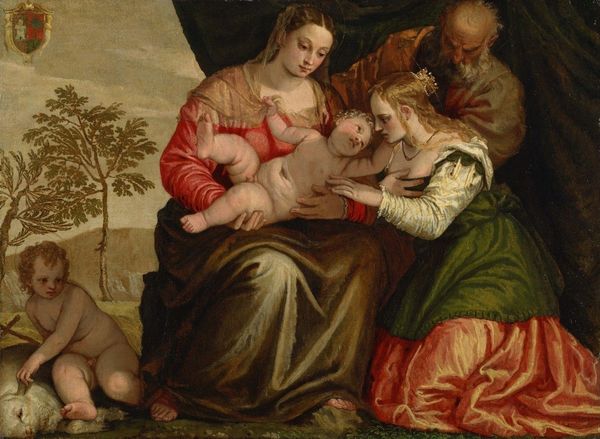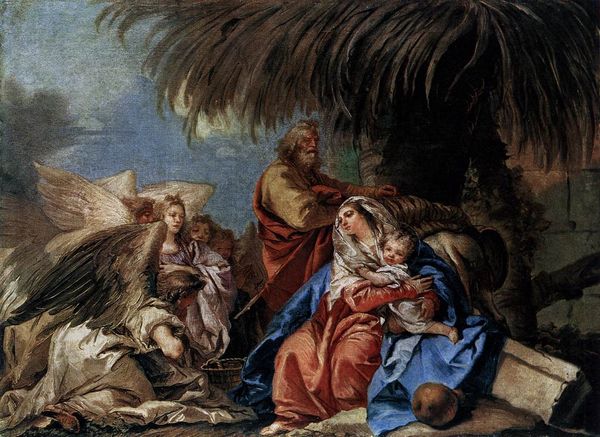
oil-paint
#
baroque
#
oil-paint
#
landscape
#
oil painting
#
history-painting
Copyright: Public Domain: Artvee
Curator: Abraham Bloemaert's "The Rest on the Flight into Egypt," painted in 1646 using oil on canvas. A prime example of Dutch Golden Age painting, but somehow… much more Italianate than you might expect. Editor: Mmm, it’s undeniably beautiful, and strangely melancholy for a pastoral scene. The way the light drapes across Mary and the baby Jesus… they look exhausted. Like they’ve been walking for days. It has a weight to it, somehow. Curator: Well, think about it in the context of the 17th century, during the Dutch Republic. Bloemaert ran a workshop in Utrecht. He produced not just paintings, but also prints. And all these had to be conceived of, created, and disseminated. A complicated production chain. Editor: It also looks like someone has chosen this very sturdy tree as a prop and composed an intimate setting. But looking closer... did the artist even see a real-life infant for this? Curator: Right, it's interesting how the idyllic scene clashes with the historical and social implications. Consider also the availability and costs of pigments. Bloemaert, using oil, had access to more durable, vibrant colors that were increasingly available to artists. Think about the global trade networks necessary for all of it to take place. Editor: I see what you mean. But those rich colors... the greens, reds and blues, give off this kind of dramatic Baroque feel, almost theatrical. They help communicate both comfort and a hidden darkness. Curator: And darkness could also be attributed to the social conditions and artistic market within which Bloemaert and his workshop functioned. They weren't simply painting religious scenes; they were operating within specific patronage structures. Editor: It’s remarkable how a painting of this period reflects the complex dance between religious storytelling, artistic technique, and a very different social landscape. Curator: Exactly! Examining the pigments, the workshop practices, helps us move past a purely aesthetic judgment. Editor: It leaves you wondering about what this moment represents; is it peace, respite, hope, or fear disguised? Thank you, Bloemaert. Curator: And by tracing these material threads, we gain insights into Dutch Golden Age trade, labor, and the dissemination of images that are crucial for a full and grounded view of these kinds of pieces.
Comments
No comments
Be the first to comment and join the conversation on the ultimate creative platform.
